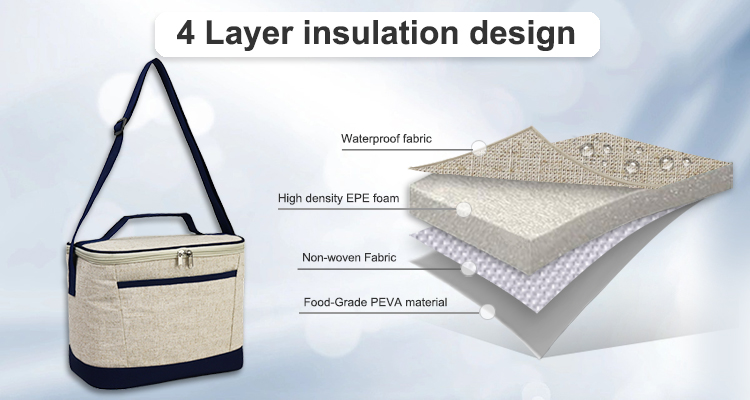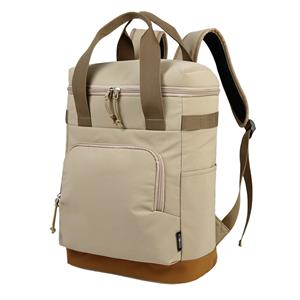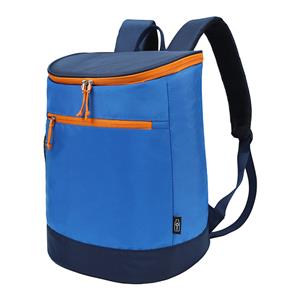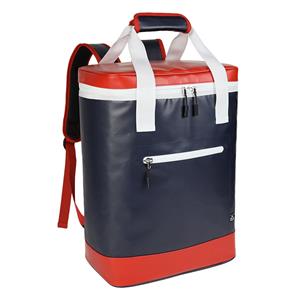Camping Coolers: A Deep Dive into Insulation and Performance
At the core of every camping cooler's effectiveness lies its insulation system, a complex interplay of materials and design principles that determine how well it can preserve the desired temperature environment. Understanding the intricacies of insulation is key to appreciating the performance variations among different cooler models and making an informed purchasing decision that aligns with your specific camping needs.

Insulation works on the fundamental principle of reducing heat transfer between the cooler's interior and the external environment. Heat naturally flows from warmer areas to cooler ones, so in the context of a camping cooler, the goal is to impede this flow as much as possible. The insulation materials used in coolers create barriers that slow down conductive, convective, and radiative heat transfer. Conductive heat transfer occurs through direct contact between materials, convective involves the movement of heat within fluids (like air), and radiative is the transfer of heat via electromagnetic waves.
Traditional coolers rely on foam - based insulation, with expanded polystyrene (EPS), commonly known as styrofoam, being one of the earliest materials used. EPS consists of numerous tiny foam cells that trap air, reducing conductive heat transfer. However, its relatively low density allows for some heat penetration over time, limiting its effectiveness in maintaining very low temperatures for extended periods. Despite this, EPS remains a cost - effective option for basic coolers intended for short - term use.
Polyurethane (PU) foam represents a significant step up from EPS in terms of insulation performance. PU foam has a higher density and more complex cell structure, which provides better resistance to heat flow. When injected into the walls and lid of a cooler during the manufacturing process, PU foam creates a homogeneous insulation layer that effectively reduces all three types of heat transfer. Coolers insulated with PU foam typically offer superior temperature - retention capabilities compared to their EPS - insulated counterparts, making them suitable for multi - day camping trips.
The introduction of vacuum - insulated panels (VIPs) has pushed the boundaries of cooler insulation even further. VIPs consist of a porous core material, such as fiberglass or perlite, enclosed in a gas - tight envelope that's evacuated to create a vacuum. The absence of air in the vacuum eliminates conductive and convective heat transfer, resulting in exceptional insulation performance. In camping coolers, VIPs are often used in combination with traditional foam insulation to create hybrid systems that maximize thermal efficiency. This hybrid approach allows manufacturers to achieve impressive temperature - retention results without significantly increasing the cooler's weight or size, which is crucial for maintaining portability.
Another innovative insulation approach gaining traction is the use of phase - change materials (PCMs). PCMs are substances engineered to absorb or release latent heat as they transition between solid and liquid states at specific temperatures. When integrated into a cooler's insulation system, PCMs can help stabilize the internal temperature by absorbing excess heat when the temperature begins to rise and releasing stored cold when it drops. This creates a more consistent cooling environment, reducing the frequency with which ice needs to be added or replaced. While PCMs are often used in conjunction with ice packs or other cooling elements, they add an extra layer of temperature regulation that enhances overall performance.
The design of a cooler's body also plays a critical role in insulation effectiveness. Features such as double - wall construction, which creates an insulating air gap between the inner and outer walls, and seamless, rotomolded exteriors that minimize points of heat leakage, contribute significantly to the cooler's ability to maintain internal temperatures. The quality of the seals around the cooler's lid and any access points is equally important. A well - designed gasket or seal creates an airtight barrier that prevents cold air from escaping and warm air from entering. Some high - performance coolers utilize magnetic seals or specialized compression latches to ensure a tight closure, further enhancing insulation retention.
It's also worth noting that the color and exterior finish of a camping cooler can influence its performance, particularly in terms of how it interacts with solar radiation. Dark - colored coolers absorb more heat from sunlight, potentially increasing the internal temperature if exposed to direct sunlight for extended periods. Conversely, lighter - colored or reflective finishes can help reflect solar radiation, reducing the heat load on the cooler's insulation. This is an often - overlooked factor that campers should consider, especially when camping in hot, sunny environments.
When evaluating the insulation performance of different camping coolers, it's helpful to look for specific metrics provided by manufacturers. Many companies now conduct rigorous temperature - retention tests under controlled conditions and publish the results. These tests typically involve monitoring how long the cooler can maintain a temperature below a certain threshold (e.g., 40°F or 32°F) with a defined amount of ice or cooling elements. While these laboratory results may not perfectly replicate real - world conditions, they offer valuable comparative data that can guide your decision - making process.
In the grand scheme of outdoor equipment, the camping cooler's insulation system is the unsung hero that enables countless memorable experiences in the wilderness. It's the reason you can savor a perfectly chilled sandwich on the third day of a backpacking trip or enjoy a cold beverage after a long day of hiking in the heat. As insulation technologies continue to advance and innovative materials find their way into cooler designs, the performance benchmark for camping coolers will only rise, setting new standards for what campers can expect in terms of temperature control and food preservation.





